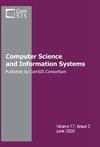Suhail:一个基于深度学习的识别失踪人口的系统
IF 1.2
4区 计算机科学
Q4 COMPUTER SCIENCE, INFORMATION SYSTEMS
引用次数: 0
摘要
在沙特阿拉伯,每天都有许多人失踪,包括儿童、年轻人、精神病患者和老年痴呆症患者。有许多失踪人口的案件仍未解决。在沙特阿拉伯,人们使用推特等社交媒体平台报告失踪人口案件。深度学习在包括计算机视觉和机器视觉在内的广泛领域的应用取得了成功。特别是,人脸识别技术可以有效地节省时间和精力,特别是在寻找失踪人员时。因此,本研究的目标是通过开发一个基于深度学习的系统来识别失踪人员来解决这个问题。本文介绍了一个名为Suhail的新系统。该系统是使用Android Studio和开源库(如TensorFlow)实现和开发的。首先,用户或政府可以通过上传照片来报告失踪人员。然后,更新和信息将与系统的其他用户(志愿者)共享。一旦志愿者发现了嫌疑人,他们就会用摄像头扫描他们的面部。然后,我们的应用程序使用人脸识别技术将嫌疑犯的照片与存储库中的照片进行比较。最后,一旦找到比对结果,我们的应用程序就会联系嫌疑人的家人,告知他们嫌疑人的位置,然后通知警方找到了失踪人员。通过使用我们的应用程序和面部识别系统,我们帮助家属和警方找到并联系失踪人员,从而节省了时间和精力。在这项研究中,759名参与者被招募来评估Suhail系统的性能。用户粘性、美感和功能是用来评估用户体验的。实验结果表明,用户喜欢应用程序的新功能,系统使用简单。此外,该系统将帮助政府和个人更快地识别失踪人口。本文章由计算机程序翻译,如有差异,请以英文原文为准。
Suhail: A Deep Learning-Based System for Identifying Missing People
Many people become missing in Saudi Arabia every day, including children, young people, and the mentally ill as well as the elderly with Alzheimer’s. There are many missing people cases that are still unsolved. In Saudi Arabia, people use social media platforms such as Twitter to report missing people cases. The application of deep learning has been successful in a wide range of fields including computer vision and machine vision. In particular, face recognition techniques are effective in saving time and effort, especially when searching for missing individuals. Hence, the goal of this research is to solve this issue by developing a deep learning-based system for identifying missing individuals. This paper introduces a new system called Suhail. The system has been implemented and developed using Android Studio and open-source libraries such as TensorFlow. First, users or governments can report missing persons by uploading photos. Updates and information will then be shared with the rest of the system’s users (volunteers). Once a volunteer discovers a suspect, they scan their face using camera. Then, our application uses face recognition techniques to compare the suspect's photo with photos from the repository. Finally, once a comparison is found, our application contacts the suspect’s family, informs them of his location and then notifies the police that a missing person has been located. By using our application and face recognition systems, we help families and police locate and reach a missing person which saves time and effort. In this study, 759 participants were enrolled to evaluate the performance of the Suhail system. Engagement, aesthetics, and functionality are used to evaluate the user experience. The results of the experiment show that users enjoy the new features of the application and that the system is simple to use. Moreover, the system would help governments and individuals identify missing people faster.
求助全文
通过发布文献求助,成功后即可免费获取论文全文。
去求助
来源期刊

Computer Science and Information Systems
COMPUTER SCIENCE, INFORMATION SYSTEMS-COMPUTER SCIENCE, SOFTWARE ENGINEERING
CiteScore
2.30
自引率
21.40%
发文量
76
审稿时长
7.5 months
期刊介绍:
About the journal
Home page
Contact information
Aims and scope
Indexing information
Editorial policies
ComSIS consortium
Journal boards
Managing board
For authors
Information for contributors
Paper submission
Article submission through OJS
Copyright transfer form
Download section
For readers
Forthcoming articles
Current issue
Archive
Subscription
For reviewers
View and review submissions
News
Journal''s Facebook page
Call for special issue
New issue notification
Aims and scope
Computer Science and Information Systems (ComSIS) is an international refereed journal, published in Serbia. The objective of ComSIS is to communicate important research and development results in the areas of computer science, software engineering, and information systems.
 求助内容:
求助内容: 应助结果提醒方式:
应助结果提醒方式:


